Disclosure:
Some of the links on this website are affiliate links, which means that if you click on one of the links and sign up or make a purchase, we may earn a small commission at no additional cost to you. This commission helps support the maintenance and operation of this site.
We only recommend products or services that we believe will provide value to our readers. Our opinions and recommendations are based on our own research and experiences, and we strive to offer honest and unbiased content.
Please note that your support through these affiliate links is greatly appreciated, as it helps us continue to provide quality content and resources.
Thank you for your support!
A Comprehensive Guide
Starting a retail business can be an exciting and rewarding venture. Whether you’re passionate about selling clothing, electronics, or specialty goods, retail businesses allow entrepreneurs to connect directly with customers and build a community around their products. Retail encompasses a wide range of business models, from brick-and-mortar stores to online e-commerce platforms. In this guide, we will explore the steps necessary to start a retail business, including types of products and services you could offer, the legal requirements, the pros and cons, choosing the right location, and potential profits.
What is a Retail Business?
A retail business involves the sale of goods or services directly to consumers for personal use. Retailers typically purchase products from manufacturers or wholesalers and then sell them to end consumers at a marked-up price. These products can include physical goods, such as clothing, electronics, or household items, as well as services like repair or customization.
Common Retail Business Types:
- Physical Goods Retail: Selling clothing, electronics, furniture, beauty products, groceries, etc.
- Service-Oriented Retail: Offering services like dry cleaning, shoe repair, or tailoring.
- Online Retail: Selling products through an e-commerce website or platforms like Amazon and Etsy.
- Specialty Retail: Selling niche products such as organic groceries, handmade crafts, or eco-friendly goods.
Products and Retail Services You Could Offer
When starting a retail business, the products and services you offer will depend on your target market, interests, and industry trends. Here are some common categories:
Product Categories:
- Apparel and Accessories: Clothing, shoes, jewelry, and handbags.
- Electronics: Smartphones, computers, gaming consoles, and accessories.
- Home Goods and Furniture: Decor, appliances, furniture, and kitchenware.
- Health & Beauty Products: Skincare, makeup, hair products, and wellness items.
- Sporting Goods: Fitness equipment, outdoor gear, and sportswear.
- Specialty Foods: Gourmet, organic, or local food products.
Service-Oriented Retail:
- Customization Services: Offering personalized engraving, embroidery, or printing for products.
- Repair Services: Repairing electronics, shoes, or other household items.
- Consulting Services: Providing advice or recommendations for products like home design or fashion.
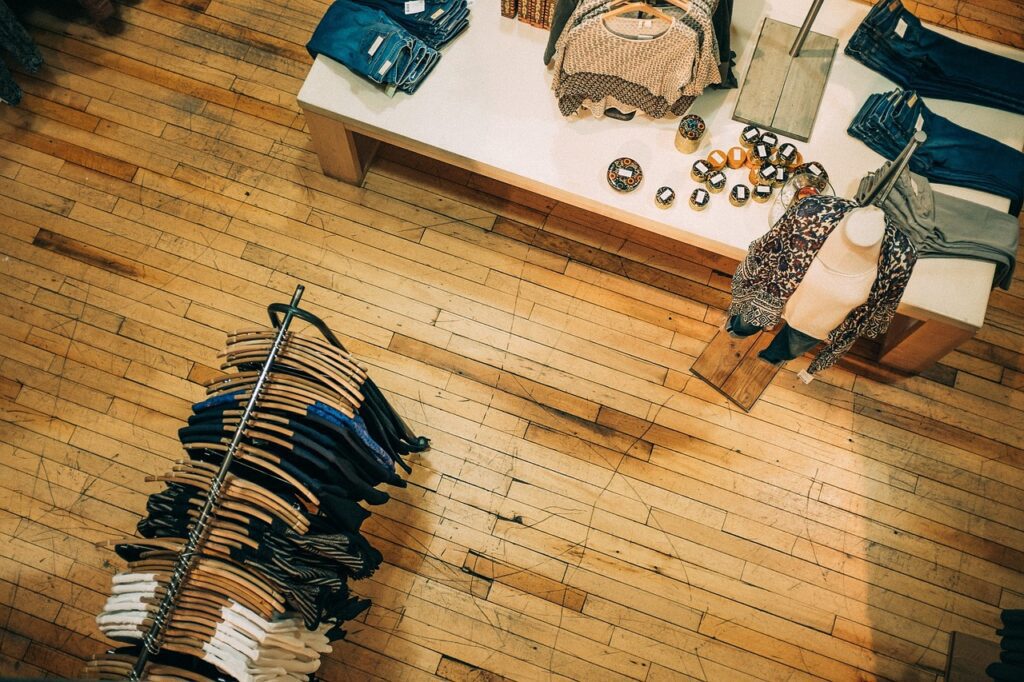
Pros and Cons of Starting a Retail Business
Starting a retail business comes with several advantages, but it also has some challenges. Let’s explore the pros and cons to help you make an informed decision:
Pros:
- Direct Interaction with Customers: Retail businesses allow for direct customer interaction, which helps build relationships and brand loyalty.
- Profit Potential: With effective pricing, marketing, and customer service, retail businesses can offer high-profit margins, especially with unique or high-demand products.
- Flexibility in Product Offering: You can adjust your product selection based on trends, seasonal demand, or customer feedback.
- Community Engagement: Brick-and-mortar stores can become hubs for local communities, offering personalized experiences that online retailers can’t.
Cons:
- High Startup Costs: Retail businesses, especially physical stores, come with significant upfront costs for inventory, rent, utilities, and employees.
- Market Competition: Retail businesses often face stiff competition, particularly from large chains and online retailers.
- Inventory Management: Managing stock levels, dealing with suppliers, and managing unsold inventory can be challenging.
- Seasonal Variability: Sales may fluctuate depending on the time of year, holidays, or economic conditions.
Obtaining a Business License and Permits
Before launching your retail business, it’s crucial to ensure you meet all legal requirements. You’ll need to obtain the necessary licenses and permits to operate legally, and the specific requirements will vary depending on your location and the type of retail business you’re opening.
1. Business License A general business license allows you to legally operate in your city or state. It is typically issued by the local government where your business is located.
Steps to obtain a business license:
- Choose a business structure (e.g., sole proprietorship, LLC, corporation).
- Register your business with your state or city.
- Pay a licensing fee (the fee can vary based on location).
- Renew the license periodically (usually annually).
2. Sales Tax Permit If your business sells physical goods, you will likely need a sales tax permit to collect sales tax from customers. You will then submit the collected sales tax to your state or local tax authority.
3. Zoning Permits Ensure your retail store is in a properly zoned area. Depending on your location, you may need a zoning permit to confirm your business complies with local zoning laws.
4. Health Department Permits If you’re selling food or beverages, you’ll need a health department permit to ensure you meet local health and safety regulations. This may include inspections of your retail space.
5. Signage Permit For businesses that plan to display signs outside their storefront, a signage permit may be required from your local municipality.
6. Fire Department Permit Retail stores, particularly those open to the public, may require a fire department permit to ensure that the space is safe for customers, including meeting fire safety regulations.
Choosing a Location
Choosing the right location is one of the most critical decisions for a brick-and-mortar retail business. Factors to consider include:
Foot Traffic: High-traffic areas, such as shopping malls, downtown areas, or busy streets, often result in more visibility and customer flow.
Demographics: Ensure that the local population matches your target market. Research income levels, age, and lifestyle preferences to determine if the area is a good fit for your products.
Accessibility: Consider parking availability, public transportation options, and ease of access for customers.
Competition: Look at the density of competing businesses in the area. Being near competitors can sometimes be beneficial, as it draws in your target customer base, but too much competition can saturate the market.
Rent and Overhead: Location costs vary, and higher foot traffic areas tend to come with more expensive rents. Be sure to balance the cost with the expected revenue potential.
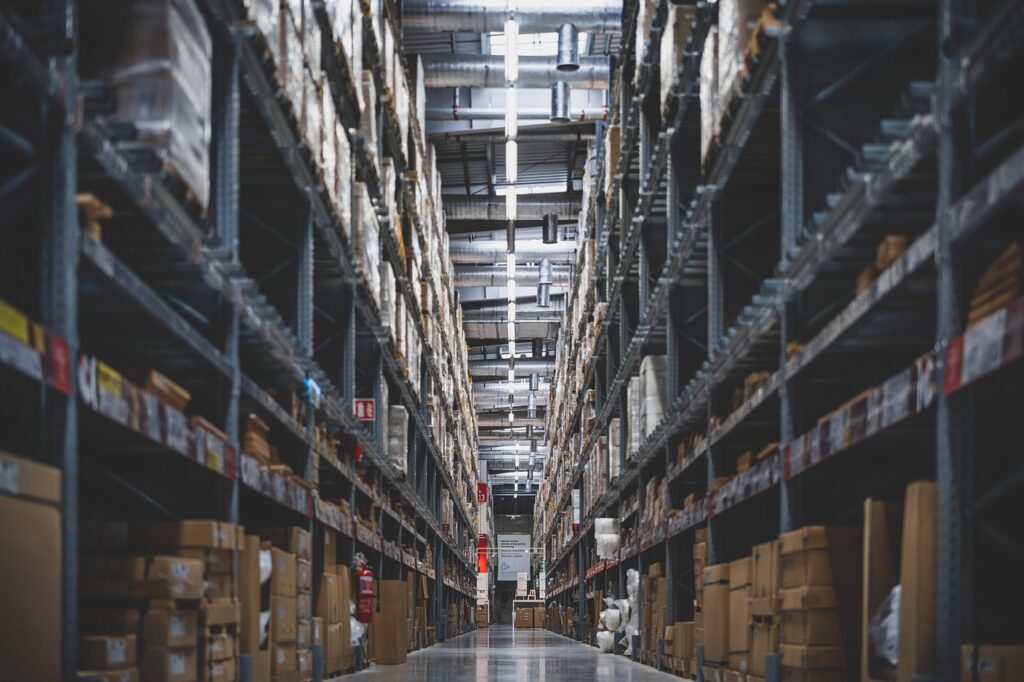
Sourcing Products for Retail Stores: A Detailed Guide
Sourcing products is one of the most critical steps in establishing and running a successful retail business. Whether you are setting up a brick-and-mortar store or an e-commerce business, finding the right products at the right price point can directly affect your profit margins and customer satisfaction. Here’s a detailed guide on how to source products for your retail store, from identifying your needs to establishing relationships with reliable suppliers.
1. Understand Your Niche and Target Market
Before sourcing products, it’s essential to clearly understand:
- Your niche: What type of products will you be selling? Are you focusing on clothing, electronics, home goods, beauty products, etc.?
- Your target audience: Who are your ideal customers? What are their preferences, price sensitivities, and shopping habits? This will help you select products that appeal directly to your audience.
Conduct market research to:
- Identify the trends in your industry.
- Understand your competitors’ product offerings.
- Determine the demand for specific items or product categories.
2. Types of Suppliers for Retail Stores
There are several types of suppliers to consider when sourcing products:
A. Manufacturers
- Direct from manufacturers: Buying directly from the manufacturer can give you the best price, especially if you’re purchasing in bulk. You can negotiate terms directly with the manufacturer.
- Private labeling: Some manufacturers offer private labeling, where they produce products that you can sell under your own brand name. This is common in beauty, food, and clothing industries.
B. Wholesalers
- Wholesalers purchase large quantities of products from manufacturers and sell them in smaller quantities to retailers. This is a convenient option if you need a variety of products but don’t want to commit to huge orders from manufacturers.
- Distributors: Distributors are intermediaries who purchase products from manufacturers and then distribute them to retailers. They often offer value-added services like transportation, storage, and bulk pricing.
C. Trade Shows and Industry Events
- Trade shows are excellent places to discover new suppliers, network with vendors, and see the latest products in your industry. Some popular trade shows include the Las Vegas Market (home goods), Magic (fashion), and the International Home + Housewares Show.
- These events often have a mix of domestic and international suppliers, allowing you to explore options that suit your business needs.
D. Dropshipping Suppliers
- With dropshipping, the supplier handles the inventory, packaging, and shipping on your behalf. This is ideal for e-commerce stores, as it requires no upfront inventory investment.
- Platforms like Oberlo, Spocket, and AliExpress allow you to find dropshipping suppliers for a wide range of products.
E. Local Artisans and Craftspeople
- For unique or niche products, sourcing from local artisans and craftspeople can help differentiate your store from competitors. It can also foster a sense of community and provide exclusive, one-of-a-kind products.
- This is especially popular in categories like handmade jewelry, art, home décor, and specialty foods.
F. Liquidators and Overstock Suppliers
- Liquidators buy excess or unsold inventory from stores or manufacturers and resell it at a discounted price. This can be a great way to find products at a lower cost.
- Overstock suppliers focus on items that are either discontinued or unsold by other retailers. They often offer significant discounts but with limited stock availability.
3. Sourcing Products Locally vs. Internationally
When deciding between local and international suppliers, consider the following factors:
A. Local Sourcing
- Benefits:
- Faster shipping times.
- Lower shipping costs.
- Easier communication due to the same time zone and language.
- Potential to build stronger relationships with suppliers.
- Drawbacks:
- Higher production or wholesale costs compared to international suppliers.
- Limited product selection or availability.
B. International Sourcing
Sourcing products internationally can open up a wide range of opportunities for your retail store. With access to lower prices and greater variety, many retailers source internationally for better margins. There are several ways to approach international sourcing:
- Direct from manufacturers overseas: For businesses looking to get custom-made or bulk products, direct international sourcing from countries like China, India, Vietnam, or Taiwan can lead to considerable cost savings.
- Sourcing from reliable international retailers: In addition to manufacturers, sourcing from well-known international retailers or established suppliers can provide more consistent quality and reliable service.
Here’s how each works:
- Direct International Manufacturers:
- Benefits:
- Lower cost per unit due to reduced labor costs and mass production.
- Access to a wide variety of products in popular international hubs like China (through platforms like Alibaba) or India (through IndiaMart).
- Customization opportunities for private labeling and unique products.
- Drawbacks:
- Longer shipping times and higher shipping costs.
- Additional customs duties, taxes, and import documentation.
- Risk of communication barriers and differences in quality control.
- Benefits:
- Sourcing from Reliable International Retailers:
- Benefits:
- Easier to vet well-established and reputable international retailers compared to unknown manufacturers.
- International retailers often offer finished, ready-to-sell products, which reduces the time required for customization.
- Products often have more consistent quality and meet international safety and regulatory standards, reducing compliance risks.
- Platforms to Source from Reliable Retailers:
- Amazon Global: Amazon allows you to source international products from trusted brands and sellers.
- AliExpress: Known for lower MOQ (minimum order quantity) and retail-friendly options, AliExpress is often used by smaller businesses looking for variety.
- DHgate: A platform that caters to smaller businesses with bulk-buying options for various products.
- Banggood: Offers a variety of categories, including electronics, fashion, and accessories, at competitive prices.
- Drawbacks:
- Higher prices compared to directly sourcing from manufacturers.
- Limited ability to customize products.
- Benefits:
- Evaluating Retailer Reputation:
- When sourcing from international retailers, always evaluate the retailer’s reputation:
- Check ratings and reviews: Read feedback from previous buyers to ensure product quality and reliability.
- Inspect return policies and warranties: Make sure you have options in case of defective products.
- Verify product certifications: Products sourced internationally may need to meet local regulations, so ensure the items you buy are compliant with safety standards in your country.
- When sourcing from international retailers, always evaluate the retailer’s reputation:
4. Online Marketplaces for Product Sourcing
If you’re not attending trade shows or dealing directly with manufacturers, online marketplaces provide an easy way to source products:
- Alibaba: Great for finding overseas manufacturers with a wide range of products, from apparel to electronics.
- Amazon Wholesale: Many retailers source products from Amazon’s wholesale program, allowing them to resell high-demand products.
- Etsy Wholesale: For artisanal, handmade, or vintage products, Etsy Wholesale allows you to buy from individual artisans in bulk.
- Faire: A wholesale marketplace for independent brands, focusing on unique, high-quality goods.
5. Evaluating and Vetting Suppliers
Before committing to a supplier, vet them thoroughly:
- Product Samples: Always request product samples to assess quality before making bulk purchases.
- Minimum Order Quantities (MOQs): Check whether the supplier has minimum order requirements that fit your budget and inventory needs.
- Lead Times: Confirm the production and shipping times. Delays in sourcing can impact your ability to meet customer demand.
- Payment Terms: Negotiate favorable payment terms. Some suppliers may offer discounts for early payment or bulk purchases.
- Reputation and Reviews: Check online reviews, ratings, and testimonials of suppliers. You can also ask for references or contact other businesses that have worked with them.
Sourcing products for your retail store involves strategic planning, negotiation, and building strong relationships with reliable suppliers. Whether you choose local artisans, international manufacturers, or wholesale distributors, finding the right products at competitive prices is key to a profitable retail business. By thoroughly vetting suppliers, managing logistics, and staying on top of inventory, you can create a product selection that meets your customers’ needs and drives business success.
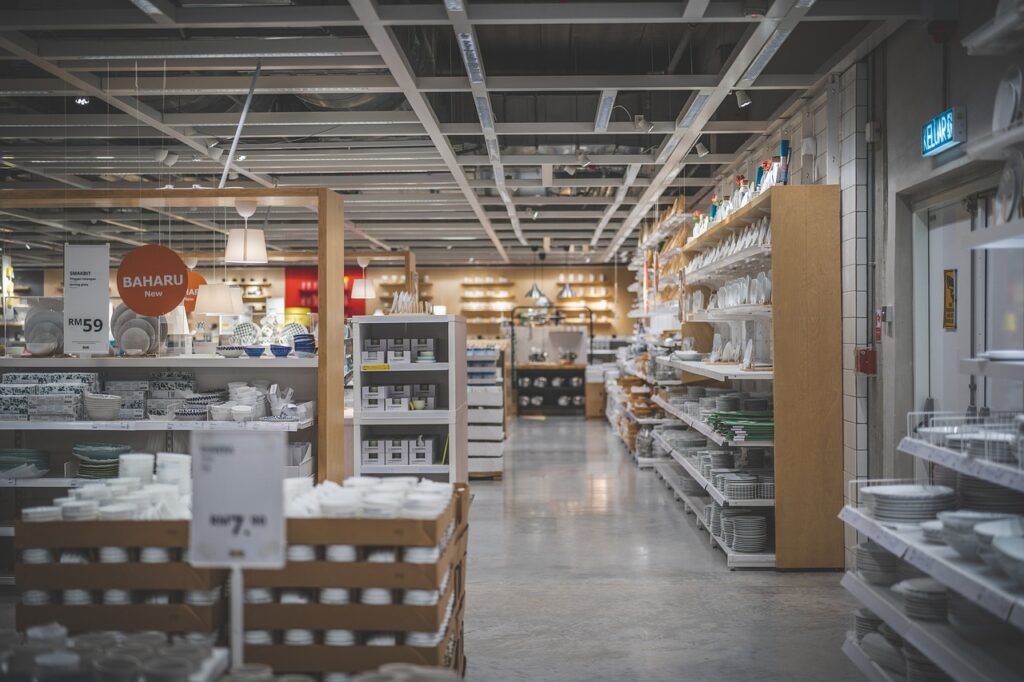
Potential Things You Might Need to Start a Retail Business
Starting a retail business requires a variety of supplies, equipment, and resources to operate efficiently. Here’s a breakdown of the key items you may need, from shelving and storage to administrative tools and customer service essentials:
1. Shelving and Displays
- Retail Shelving Units: To display products in an organized and visually appealing manner. Options include gondola shelving, wall-mounted shelves, and freestanding racks.
- Clothing Racks: For hanging apparel in fashion or boutique stores.
- Display Cases: Ideal for showcasing jewelry, electronics, or specialty items that require protection or a high-end presentation.
- Mannequins: For fashion stores, mannequins help display clothing in an appealing way.
- Signage and Price Tags: Clear, attractive signage for pricing and promotions is essential for directing customers and increasing sales.
2. Storage and Inventory Management
- Stockroom Shelving: Strong, durable shelving in your stockroom to organize back-stock items efficiently.
- Storage Bins and Containers: For organizing small products or keeping seasonal inventory in good condition.
- Inventory Management Software: Helps you track sales, monitor stock levels, and reorder inventory automatically. Examples include Shopify, Square, or Vend.
3. Point of Sale (POS) System
- POS Terminal: A system that processes transactions, including barcode scanners, receipt printers, and card readers. Many modern systems integrate with inventory management software.
- Cash Register: A traditional cash register or a digital POS system to handle cash and credit transactions.
- Barcode Scanner: Essential for quickly and accurately processing sales and tracking inventory.
- Receipt Printer: For printing receipts to provide to customers for purchases.
4. Fixtures and Furniture
- Checkout Counter: A designated area for customers to pay, equipped with your POS system, bags, and receipts.
- Furniture: Depending on your store type, you may need additional furnishings like chairs, display tables, or fitting room furniture.
- Decor: To create a welcoming ambiance, decorations like wall art, lighting, and planters can enhance the customer experience.
5. Technology and Security
- Computers/Tablets: For managing inventory, sales records, customer service, and online orders. Many modern POS systems can be run on tablets.
- Security Cameras: Essential for preventing theft and protecting your merchandise. Install cameras throughout the store, especially at the entrance, exits, and checkout area.
- Security System (Alarms/Tags): Invest in an alarm system for break-ins and consider using security tags for high-value items to deter shoplifting.
- Wi-Fi Router: Stable internet access for your POS system, inventory management software, and for any devices your customers may use (such as guest Wi-Fi).
- E-commerce Platform (if applicable): If you sell online, you’ll need an e-commerce website, which may require additional software or integration with your in-store system.
6. Customer Service and Supplies
- Shopping Bags: Branded or plain bags for customers to carry their purchases, including eco-friendly options for sustainability.
- Gift Wrapping Materials: If you offer gift wrapping, ensure you have wrapping paper, ribbons, and boxes available.
- Customer Service Desk/Area: A designated area where customers can make returns, ask questions, or get assistance.
- Loyalty Program Tools: Cards, apps, or software to run a customer loyalty or rewards program, which encourages repeat business.
7. Marketing and Branding Materials
- Business Cards: A simple and effective way to market your business and give customers contact information.
- Flyers/Posters: To advertise sales, special events, or new products.
- In-Store Signage: Professionally printed signs to advertise promotions, guide customers, or highlight featured items.
8. Licenses, Permits, and Legal Documents
- Business License: Ensure you have the correct license to legally operate in your city and state.
- Sales Tax Permit: Necessary for collecting sales tax.
- Zoning Permit: Ensure your retail space complies with local zoning laws.
- Health Permits: If applicable, especially for food-based retail businesses.
- Insurance: General liability, property insurance, and workers’ compensation are crucial for protecting your business, employees, and assets.
9. Staff and Employee Resources
- Uniforms/Name Tags: If required, uniforms or name tags help with branding and professionalism.
- Time Clock System: Whether digital or manual, this helps track employee hours and ensures payroll accuracy.
- Training Materials: For onboarding new employees, including manuals or online training platforms to teach store policies, sales techniques, and product knowledge.
- Break Room Equipment: If you have staff, you may need a small break area with a refrigerator, microwave, and seating.
10. Miscellaneous Items
- Cleaning Supplies: For maintaining a clean and inviting retail environment. Include vacuum cleaners, glass cleaner, and surface disinfectants.
- Lighting: Well-placed lighting can enhance product displays and the overall store ambiance. Track lighting, spotlights, and natural light are great options.
- Shopping Carts or Baskets: Depending on the size of your store and the type of products you sell, customers may need carts or baskets to shop comfortably.
- Floor Mats: For both aesthetics and safety at the entrance of your store.
- Music System: Background music can create a pleasant shopping atmosphere. Invest in a reliable sound system.
Things You Might Need to Outsource for a Retail Business
Starting and running a retail business often requires skills, time, or resources that you may not have in-house. Outsourcing certain tasks can help ensure quality and efficiency in various aspects of your business. Here’s a list of key areas where outsourcing can be beneficial for a retail store:
1. Store Construction and Design
- Architect and General Contractor: If you’re building a new store or renovating an existing one, outsourcing the construction work to a professional contractor is essential. This includes tasks like structural design, layout planning, electrical work, plumbing, and ensuring the space meets building codes.
- Interior Designer: For creating a visually appealing and functional store layout, consider hiring an interior designer who specializes in retail spaces. They can help optimize product displays, traffic flow, lighting, and the overall ambiance of your store.
- Signage Installation: Custom signage can be crucial for branding and attracting customers. Professional sign companies can create and install exterior and interior signs that comply with local regulations.
2. Marketing and Branding
- Graphic Designer: To create a professional logo, business cards, flyers, and promotional materials, outsourcing to a graphic designer is recommended. A cohesive visual identity helps build brand recognition.
- Marketing Agency: A digital or traditional marketing agency can help you develop and execute advertising campaigns, including social media, email marketing, SEO, and paid ads. Agencies have expertise in targeting the right audience and driving traffic to your store.
- Social Media Manager: Managing social media accounts requires time and consistency. Outsourcing this role can help keep your online presence active, engage customers, and build brand loyalty through platforms like Instagram, Facebook, and TikTok.
3. Website and E-commerce Development
- Web Developer: If you’re setting up an e-commerce site, hiring a web developer ensures your site is professional, functional, and user-friendly. They can help with design, navigation, and integrating a payment gateway.
- SEO Specialist: To make your online store more visible in search engines, an SEO expert can optimize your website content, product pages, and overall web structure for better ranking on Google.
- Content Creator: If you plan to have a blog, product descriptions, or any other written content on your site, outsourcing to professional writers or content creators can ensure your copy is high-quality and relevant to your audience.
4. Accounting and Bookkeeping
- Accountant: An accountant can help you set up the financial structure of your business, manage taxes, handle payroll, and provide financial advice. This is crucial for compliance and for keeping your business on a solid financial footing.
- Bookkeeper: Regular bookkeeping tasks, like tracking sales, expenses, and inventory, can be outsourced to a professional to ensure your records are accurate and up-to-date.
5. IT and Technology Support
- IT Support Services: If you’re using a Point of Sale (POS) system, inventory software, or any digital infrastructure, you may need IT support to handle software issues, network security, and hardware maintenance.
- Cybersecurity: For protecting customer data and preventing breaches, outsourcing cybersecurity services can ensure your retail business is safe from potential threats.
6. Inventory Management and Fulfillment
- Supply Chain Management: Managing inventory efficiently can be challenging, especially with multiple vendors and products. Outsourcing to supply chain experts or fulfillment centers can streamline this process by handling stock levels, reordering, and distribution.
- Warehouse and Fulfillment Services: If you’re running an e-commerce business in addition to your retail store, outsourcing warehousing and order fulfillment can save time and resources. Third-party logistics (3PL) providers can store products, pack orders, and handle shipping.
7. Cleaning and Maintenance
- Commercial Cleaning Service: Outsourcing cleaning to a professional service ensures your store remains presentable and hygienic. Regular cleaning can include floors, windows, restrooms, and common areas.
- Maintenance Contractors: For repairs, electrical work, plumbing issues, or general maintenance, having reliable contractors on call is important. This helps avoid disruptions to store operations.
8. Security and Loss Prevention
- Security Guard Services: If your store deals with high-value items or is located in a high-traffic area, outsourcing security personnel can help protect your business from theft and ensure customer safety.
- Surveillance and Alarm Systems: Installing a surveillance system or alarm can be outsourced to specialized security companies that provide monitoring services and support.
- Loss Prevention Experts: Outsourcing loss prevention can help you develop and implement strategies to minimize theft and shrinkage, whether through employee training or additional security measures.
9. Legal Services
- Business Lawyer: Hiring a business lawyer can help you navigate legal issues like lease agreements, contracts with suppliers, business licensing, and intellectual property protection.
- HR and Employment Law Consultants: If you’re hiring employees, outsourcing HR services can assist with recruitment, employment contracts, onboarding, and compliance with labor laws.
10. HR and Payroll Management
- HR Outsourcing: As your business grows, you may need assistance with human resources tasks like recruiting, training, and managing employee benefits. Outsourcing HR services can save time and ensure compliance with labor laws.
- Payroll Services: Outsourcing payroll ensures that your employees are paid accurately and on time while managing tax withholdings, benefits, and other deductions efficiently.
11. Logistics and Shipping
- Courier and Shipping Services: If you’re shipping products to customers, outsourcing to a reliable shipping company or using third-party logistics (3PL) providers can handle fulfillment and delivery, reducing the burden on your in-house team.
12. Employee Training Programs
- Retail Training Providers: Professional trainers can be outsourced to conduct employee training on topics like customer service, sales techniques, and operational procedures. Investing in employee training improves performance and enhances the customer experience.
Outsourcing key tasks when starting a retail business can save you time, ensure specialized work is done correctly, and allow you to focus on core aspects like sales and customer service. From store construction to marketing, inventory management, and legal support, outsourcing can enhance efficiency, reduce costs, and contribute to long-term business success.
Insights on Potential Profits
The profitability of a retail business largely depends on factors like product margins, operational efficiency, and location. Here’s a breakdown of what affects profit potential:
Product Markups: Retailers typically mark up products by 50-100%, depending on the industry. Specialty or unique items tend to have higher margins, while commodities like groceries may have smaller markups.
Sales Volume: The more customers you attract, the higher your sales volume. This can be influenced by location, marketing, and product selection.
Operational Costs: Rent, utilities, staff wages, and inventory costs all impact your profit margins. Controlling expenses while maintaining quality can significantly boost profitability.
Online Sales: If you integrate e-commerce into your retail model, you can increase your customer base beyond your local area, adding an additional revenue stream.
Starting a retail business requires careful planning, from selecting the right products and services to securing the necessary licenses and permits. While the initial costs and competition can be high, a well-run retail business has significant profit potential, particularly when it’s strategically located and meets customer needs. By understanding the pros and cons, choosing the right location, and staying informed about legal requirements, you can set your retail business up for success. Below is a comprehensive guide to get you started.
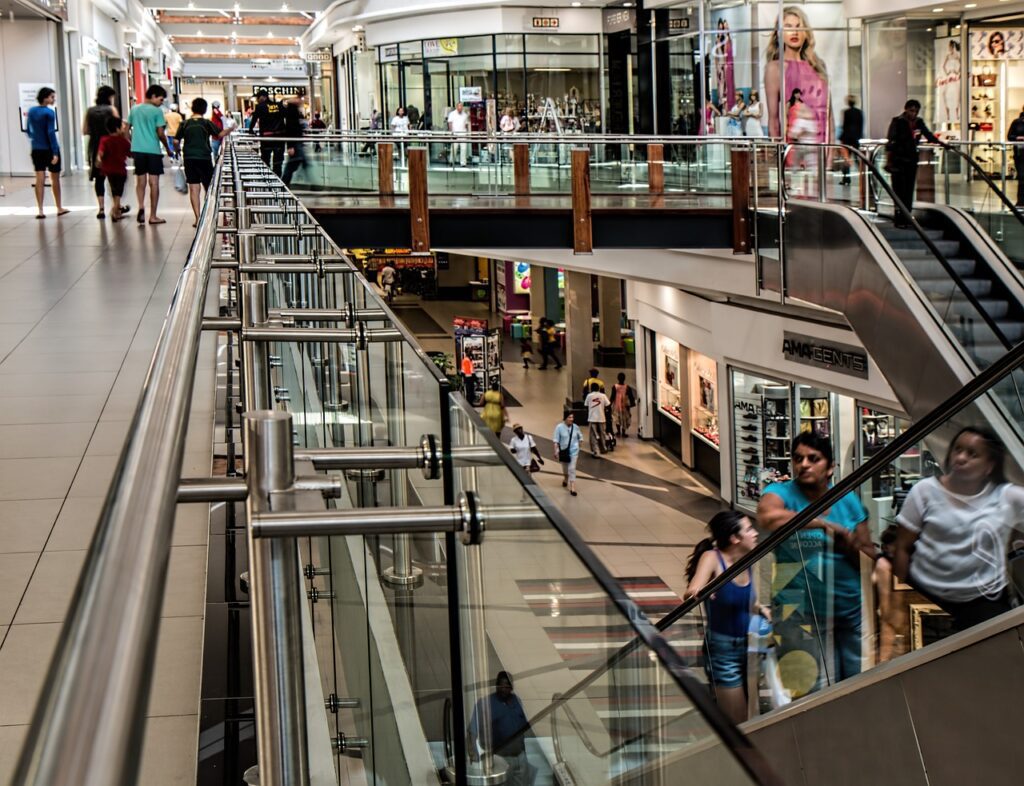
How to Start a Retail Business: A Comprehensive Guide
Starting a retail business is an exciting venture that allows you to sell products or services directly to consumers. Whether you’re passionate about fashion, electronics, or specialty goods, a retail business can be a rewarding way to turn your passion into profit. However, building a successful retail operation requires careful planning, smart decisions, and knowledge of the legal and financial aspects of business ownership. This guide will take you through every step you need to take to start your own retail business, from choosing the right products to understanding the permits and licenses required.
Step 1: Choose Your Retail Niche and Products
One of the first steps to starting a retail business is choosing what you will sell. Your niche is the specific segment of the market that you’ll target with your products or services. Picking the right niche is crucial because it will define your customer base, product selection, and marketing strategy.
Identifying Your Niche
Your retail niche should align with both market demand and your personal interests or expertise. Here are a few steps to help you identify the right niche:
- Research Market Trends: Use tools like Google Trends, social media, and industry reports to see what’s popular and where there’s growing demand.
- Assess Competition: Look at existing businesses in your potential niche. Is the market saturated, or is there room for a new player with a unique offering?
- Define Your Target Customer: Who will buy your products? Consider demographics like age, income level, and lifestyle.
- Match Interests with Opportunity: Choose a niche that excites you but also has clear business potential. Your passion can help drive success, but there must be demand.
Popular Retail Product Categories
- Apparel and Accessories: Clothing, shoes, jewelry, and handbags.
- Health & Beauty: Skincare, cosmetics, haircare, and wellness products.
- Home Goods and Decor: Furniture, kitchenware, bedding, and home decor items.
- Electronics: Smartphones, laptops, gaming consoles, and gadgets.
- Specialty Foods: Organic, gourmet, or dietary-specific food products.
- Sporting Goods: Fitness equipment, outdoor gear, and sports apparel.
Step 2: Write a Retail Business Plan
Every successful business starts with a strong business plan. This document outlines your business goals and details how you plan to achieve them. A well-structured business plan will guide your decisions and help attract investors or secure loans.
Key Sections of a Retail Business Plan:
- Executive Summary: A brief overview of your business, including your niche, products, and target audience.
- Business Description: More detailed information about your business, including its name, structure (e.g., LLC, corporation), and objectives.
- Market Research and Analysis: In-depth research on your target market, competition, and trends. Explain how your business will meet customer needs.
- Organization and Management: Describe your business structure and the key roles in your company, such as store manager, buyer, or marketing director.
- Product Line: Detail your product offerings, including sourcing, pricing, and competitive advantages.
- Marketing and Sales Strategy: How will you promote your business? Include your branding, advertising, and customer acquisition strategies.
- Financial Projections: Projected income, expenses, and profit margins. Include a break-even analysis to determine how long it will take to become profitable.
Step 3: Legal Considerations – Licenses and Permits
To operate legally, you’ll need to acquire the appropriate licenses and permits for your retail business. These requirements vary depending on your location, the type of products you sell, and your business structure.
Common Licenses and Permits for Retail Businesses:
- Business License: Most cities and states require a general business license to operate legally. Contact your local government office to determine how to apply.
- Sales Tax Permit: If you sell physical products, you’ll need a sales tax permit to collect and remit sales tax.
- Zoning Permit: Make sure the location of your retail business is zoned for commercial use. Some areas may require specific permits for retail establishments.
- Health Permits: If you sell food or beverages, you will need a health permit from your local health department.
- Fire Department Permit: Many retail spaces require a fire department inspection to ensure that your store meets fire safety regulations.
- Sign Permit: Some cities require businesses to obtain permits before installing exterior signage.
Additional Legal Steps:
- Choose a Business Structure: Select your legal structure, such as a sole proprietorship, LLC, or corporation. This decision will affect how you pay taxes and your level of personal liability.
- Register Your Business: Depending on your state, you may need to register your business name and entity with the local government.
- Get an EIN: An Employer Identification Number (EIN) from the IRS is required for tax purposes and to hire employees.
Step 4: Secure Financing and Manage Cash Flow
Starting a retail business can be capital-intensive, especially if you’re setting up a physical store. You’ll need funds to purchase inventory, lease a storefront, and cover operational expenses. There are several ways to finance your business:
Financing Options:
- Personal Savings: Many entrepreneurs start by using their personal savings.
- Small Business Loans: Banks and credit unions offer loans specifically for small businesses.
- Investors: You may find investors willing to fund your business in exchange for equity.
- Crowdfunding: Platforms like Kickstarter allow you to raise funds by pre-selling your products.
Financial Management:
Once your business is running, managing cash flow is crucial. Make sure to:
- Budget for Operating Costs: Include rent, utilities, employee wages, and marketing.
- Track Inventory: Overstocking or understocking can hurt your bottom line. Implement an inventory management system to keep track of sales and reorder points.
- Plan for Seasonal Fluctuations: Many retail businesses experience seasonal spikes (e.g., holidays), so plan your cash flow accordingly.
Step 5: Choose a Location (for Brick-and-Mortar Stores)
Choosing the right location can make or break your retail business. A high-traffic, accessible location can increase your visibility and attract customers, but it often comes at a higher cost. You’ll need to balance the advantages of a prime location with your budget.
Considerations for Choosing a Location:
- Foot Traffic: High foot traffic areas like shopping malls or downtown areas can generate more walk-in customers.
- Target Market: Choose a location where your target audience lives or shops. Analyze the demographics of the area.
- Competition: While being near competitors can sometimes boost visibility, too much competition in a small area can limit your potential market share.
- Accessibility: Make sure your location is easily accessible by car, public transport, or foot. Parking availability is also a key factor.
- Rent and Overhead Costs: Prime locations often come with higher rent. Make sure the rent aligns with your projected sales and profit margins.
Step 6: Develop Your Marketing and Sales Strategy
Once your store is up and running, you’ll need a marketing plan to attract customers and build brand awareness. Your marketing strategy should include both online and offline tactics.
Marketing Ideas for Retail Businesses:
- Social Media Marketing: Use platforms like Instagram, Facebook, and Pinterest to showcase your products, engage with customers, and run promotions.
- Email Marketing: Build an email list to send out newsletters, sales promotions, and product updates.
- In-Store Promotions: Offer special discounts, loyalty programs, or exclusive in-store events to attract and retain customers.
- SEO and Online Advertising: Optimize your website for search engines (SEO) and run targeted ads on Google or social media platforms to reach a broader audience.
Step 7: Open for Business and Manage Operations
After completing all the necessary preparations, it’s time to open your doors and start selling. However, running a retail business requires ongoing management to ensure long-term success.
Day-to-Day Operations:
- Customer Service: Exceptional customer service is key to building customer loyalty. Train your staff to offer personalized service and resolve customer issues quickly.
- Inventory Management: Stay on top of inventory to ensure you don’t run out of popular items or get stuck with unsold stock.
- Employee Management: If you hire staff, create a positive work environment and provide ongoing training.
- Track Sales and Expenses: Use accounting software or a point-of-sale system to track sales, manage expenses, and monitor profitability.
Potential Profits and Scalability
Retail businesses have the potential for high profit margins, especially if you sell high-demand products with significant markups. However, profitability depends on several factors, including your location, pricing strategy, and operational efficiency.
Factors Affecting Profitability:
- Product Margins: Retailers typically mark up products by 50-100%. Specialty or niche items often command higher profit margins.
- Sales Volume: The more customers you attract, the higher your potential revenue. Marketing, customer service, and location will all impact your sales volume.
- Operational Costs: Rent, utilities, wages, and inventory costs will impact your bottom line. Efficient operations help maximize profit.
Scaling Your Business:
Once your business is established, you can explore opportunities for growth by:
- Expanding your product line.
- Opening additional retail locations.
- Launching an e-commerce site.
- Franchising your business.
Starting a retail business can be a fulfilling and profitable endeavor, but it requires careful planning, attention to detail, and a solid understanding of the retail landscape. By following the key steps outlined in this guide—choosing a niche, creating a business plan, securing the necessary licenses and permits, selecting a location, and developing an effective marketing strategy—you can set your retail business up for long-term success. Managing day-to-day operations, maintaining excellent customer service, and continually analyzing sales and expenses will help ensure your business thrives. With the potential for growth through expanded product lines, online sales, or additional locations, the retail business offers opportunities for both financial gain and personal satisfaction. Ultimately, the combination of strategic planning and passion can turn your retail venture into a lasting success.
FAQ: How to Start a Retail Business
1. What is a retail business?
A retail business involves selling goods or services directly to consumers for personal use. Retailers purchase products from manufacturers or wholesalers and resell them at a marked-up price. This can be done through brick-and-mortar stores, online platforms, or a combination of both.
2. How do I choose the right retail niche?
Choosing the right niche involves researching market trends, assessing competition, and identifying your target audience. Look for growing demand, consider your own interests, and match them with potential opportunities. Popular retail niches include fashion, electronics, home goods, and specialty foods.
3. Do I need a business plan?
Yes, a business plan is essential for laying out your goals, target market, competition, product offerings, marketing strategies, and financial projections. It serves as a roadmap for your business and helps you stay focused as you grow.
4. What licenses and permits are required to start a retail business?
Common licenses and permits for retail businesses include:
- A general business license to legally operate.
- A sales tax permit to collect and remit sales tax.
- A zoning permit to ensure your store is located in an area zoned for retail.
- Health department permits if you sell food or beverages.
- A fire department permit for safety inspections.
- A signage permit if you plan to display signs outside your store.
5. How do I finance my retail business?
You can finance your retail business through personal savings, small business loans, investors, or crowdfunding. It’s important to budget for startup costs, including inventory, rent, marketing, and employee wages, while managing cash flow efficiently once your business is operational.
6. How important is location for a brick-and-mortar retail store?
Location is critical for brick-and-mortar stores. High-traffic areas can lead to increased visibility and customer visits, but they often come with higher rent. When choosing a location, consider foot traffic, target demographics, accessibility, competition, and overhead costs.
7. What are the benefits of starting a retail business?
Some of the key benefits of starting a retail business include:
- Direct interaction with customers.
- Flexibility in product offerings.
- High-profit potential, especially with unique or in-demand products.
- Community engagement through brick-and-mortar locations.
8. What are the challenges of starting a retail business?
Common challenges include:
- High startup costs for inventory, rent, and operational expenses.
- Competition from other retail businesses, including large chains and online retailers.
- Managing inventory effectively to avoid overstocking or running out of popular items.
- Dealing with seasonal sales fluctuations.
9. How do I market my retail business?
Marketing strategies for retail businesses include:
- Social media marketing to engage with customers and showcase products.
- Email marketing to send promotions and updates.
- In-store promotions like discounts or loyalty programs.
- Online advertising (e.g., Google Ads, Facebook Ads) to attract a wider audience.
10. Can I start an online retail business instead of a physical store?
Yes, many retailers successfully operate exclusively online or combine both physical and e-commerce stores. An online retail business allows you to reach a global audience and can have lower startup costs than a physical storefront.
11. How can I ensure profitability in my retail business?
Profitability depends on various factors, such as product pricing, sales volume, and managing operational costs. By selecting products with good margins, optimizing your location or e-commerce presence, and maintaining strong financial management, you can maximize profit potential.
12. What are my options for scaling a retail business?
Once your retail business is established, you can grow by:
- Expanding your product line.
- Opening additional locations.
- Launching an e-commerce site.
- Franchising your business model.
This FAQ addresses many common questions about starting a retail business, helping you get started with a solid foundation and the right information.
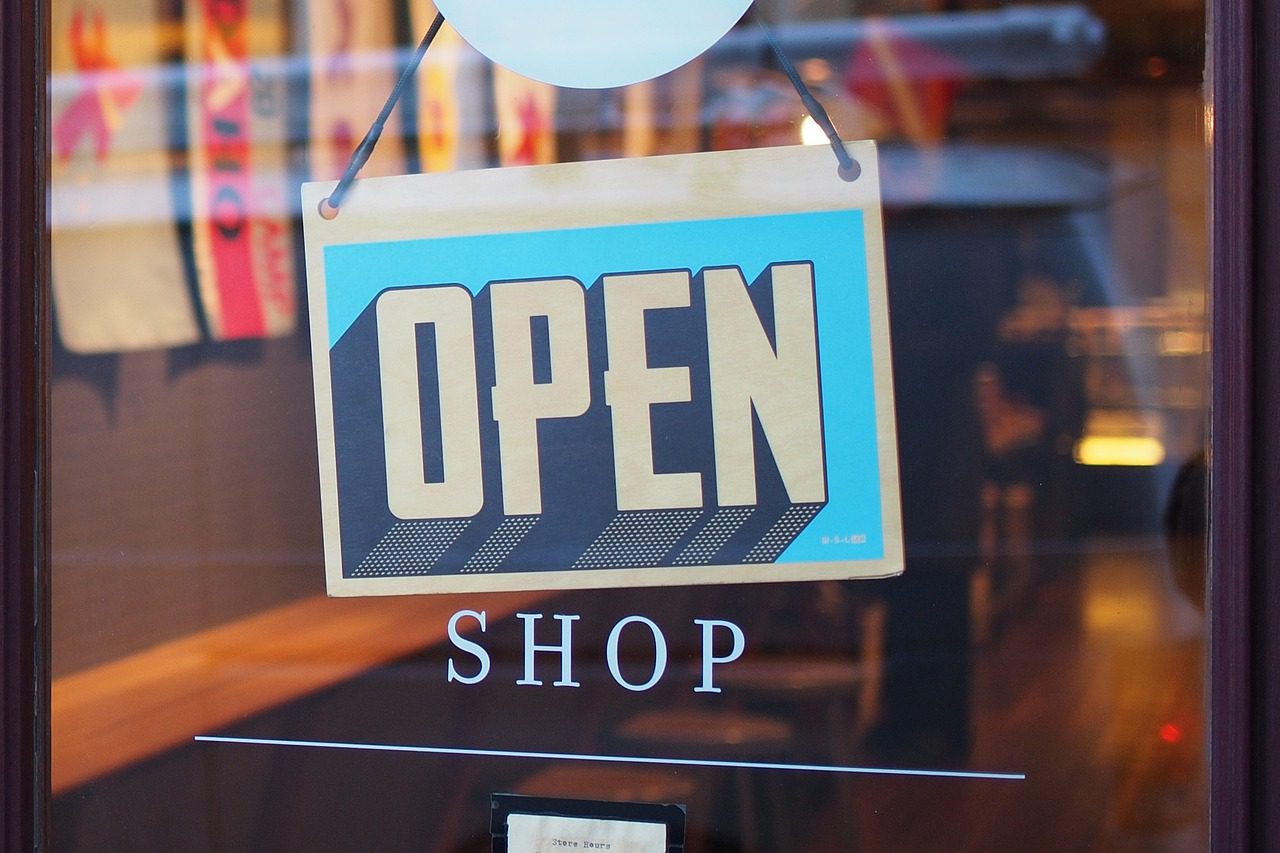


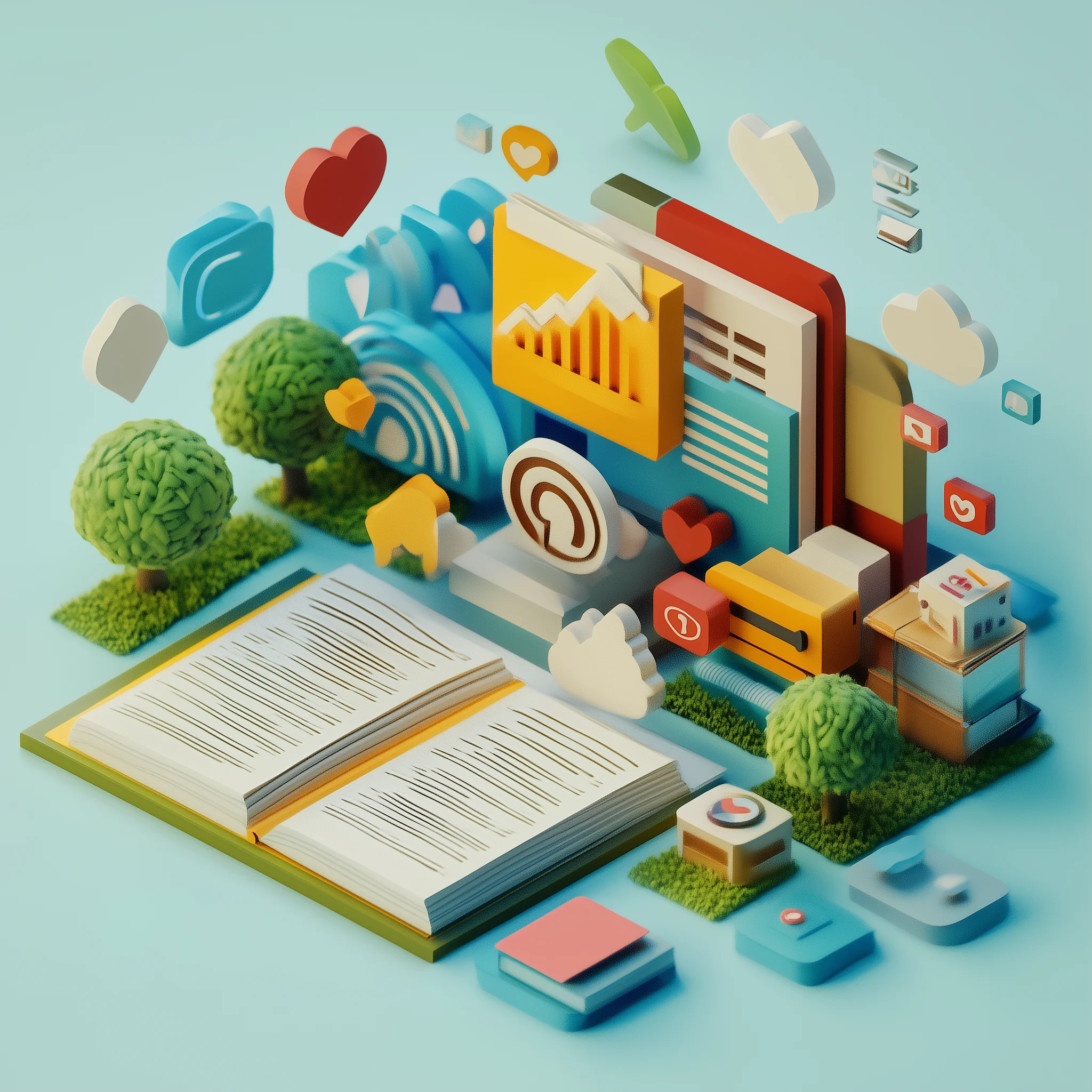
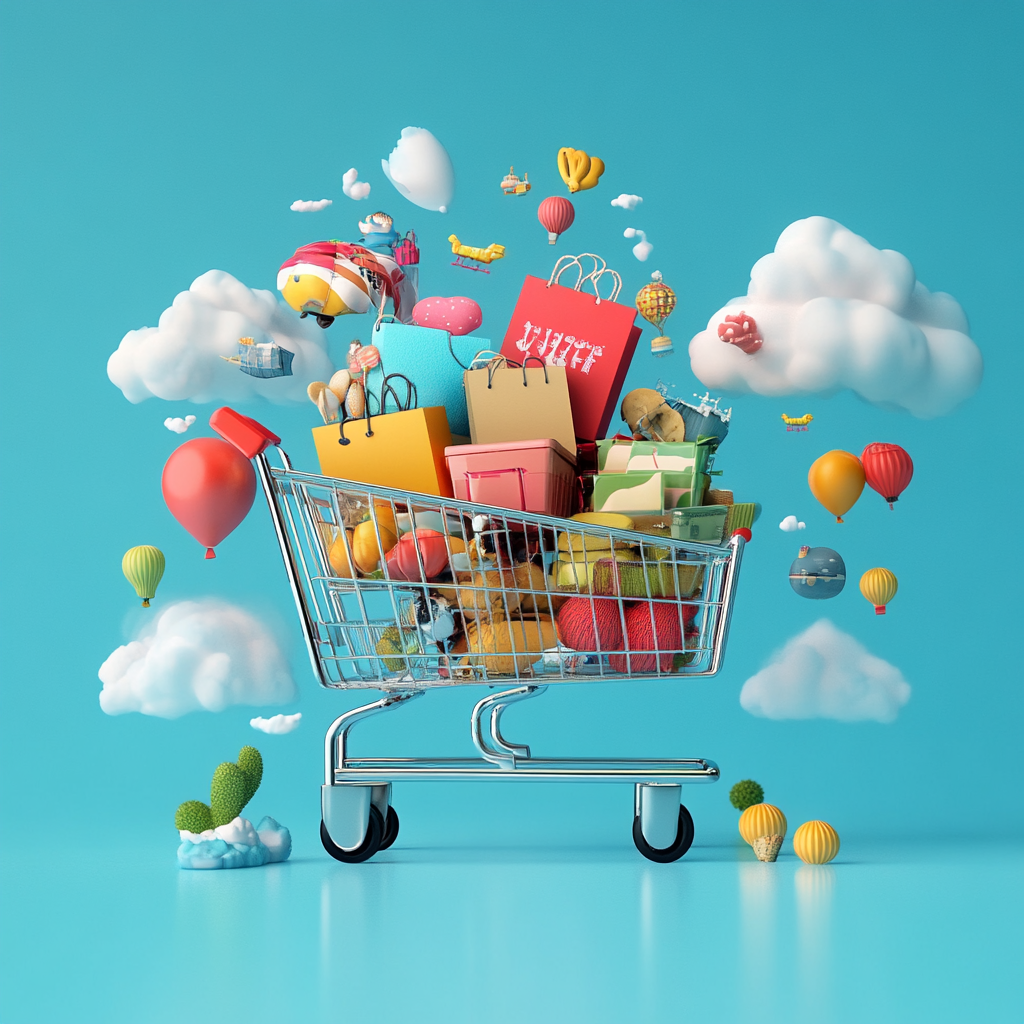
Leave a Reply